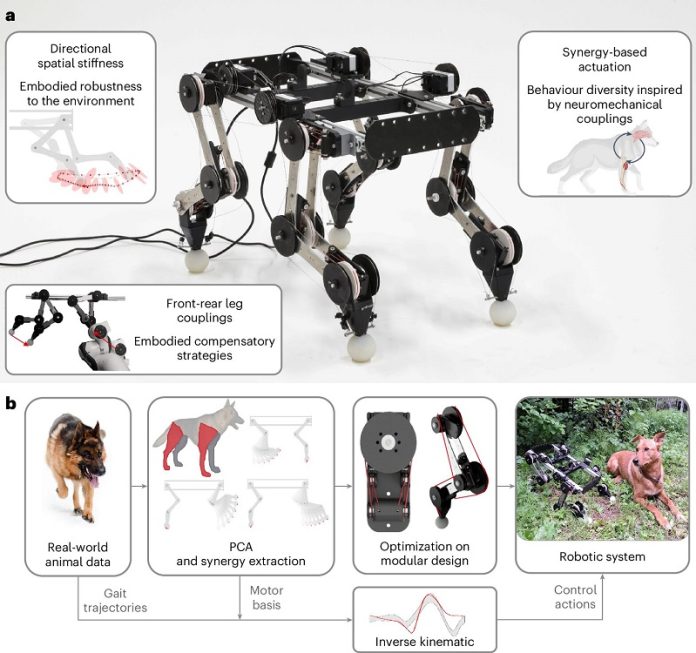
A clever design lets this robot move like a dog—powered only by smart mechanics
A team of scientists from TU Delft and EPFL has created a robot that can run like a dog—without using any motors.
Instead, the robot uses carefully designed mechanical parts to move, making it highly energy-efficient. Their findings were recently published in Nature Machine Intelligence.
“Most of today’s walking robots use a lot of energy and can’t run for long,” says Cosimo Della Santina, assistant professor at TU Delft. “We wanted to fix that by copying how animals move in nature.”
The idea came from an amazing observation. Della Santina shows a video of a dead fish that appears to be swimming upstream.
Even though the fish is lifeless, the current pushes against its body in a way that makes it move—thanks to its natural shape and structure. “It shows how motion can happen purely from smart mechanics,” he explains.
Inspired by this, the research team decided to create a robot that could move in a similar way—without needing constant power. They studied how real dogs walk and run, using machine learning to analyze the data. This helped them design the robot’s body using springs, cables, and joints arranged in a very precise way.
The result? A four-legged robot that can walk and run on a treadmill without any motors at all. The treadmill itself gives the robot the push it needs to move. And because the robot is built with such smart mechanics, it can even adjust to different speeds by itself.
To make the robot even more useful, the team added motors that can help it deal with obstacles, like climbing stairs or avoiding objects. But these motors only kick in when needed, so the robot still saves a lot of energy.
This project could be a big step toward making robots that are both smart and efficient. “We’re working on robots that use less energy but can still think and adapt to the world around them,” says Della Santina.
With designs inspired by nature and guided by data, these dog-like robots may one day be used in real-world tasks—while using far less power than today’s robots.



